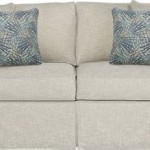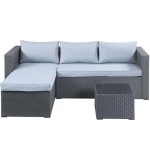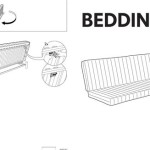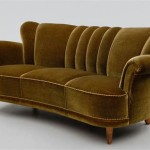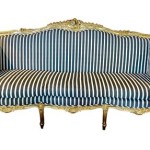Average 3-Seat Sofa Length: A Comprehensive Guide
Selecting the right size sofa is crucial for creating a comfortable and aesthetically pleasing living space. A 3-seat sofa is a popular choice, offering a balance between seating capacity and space efficiency. Understanding the average length of a 3-seat sofa, along with the factors that influence its dimensions, is essential for making an informed purchasing decision. This article provides a detailed exploration of the average length of a 3-seat sofa, delving into variations, considerations for space planning, and key elements affecting overall dimensions.
Generally, a 3-seat sofa is designed to comfortably accommodate three adults. While there are no strict regulatory standards defining sofa sizes, manufacturers adhere to industry conventions that guide their designs. The "3-seat" designation typically refers to a sofa designed to seat three people comfortably, but the actual dimensions can vary based on style, armrest design, backrest height, and overall construction.
The average length of a 3-seat sofa typically falls within the range of 75 to 90 inches (190 to 229 centimeters). This range provides a general guideline, but it is important to remember that specific models may deviate from this average due to design variations. Some manufacturers may offer compact 3-seat sofas that prioritize space-saving, while others may emphasize luxurious comfort with larger dimensions.
Key Point 1: Factors Influencing 3-Seat Sofa Length
Several factors contribute to the variation in length observed among 3-seat sofas. These factors include the style of the sofa, the design of the armrests, backrest characteristics, and the construction materials used.
Sofa Style: The style of a sofa plays a significant role in determining its overall length. For instance, a traditional sofa with rolled arms and a high back might be longer than a modern, minimalist sofa with sleek, narrow arms. Chesterfield sofas, known for their deep button tufting and rolled arms, are often towards the upper end of the length range for 3-seat sofas. Conversely, mid-century modern sofas, which often feature clean lines and tapered legs, tend to be more compact.
Armrest Design: The design of the armrests has a direct impact on the sofa's overall width, and consequently, its length. Wide, padded armrests contribute to a longer sofa, while narrow, track armrests or armless designs can help to minimize the overall length. Some sofas feature sloping or flared armrests, which can also affect the overall dimensions. Considerations should be made for the usability of the armrests as well. Padded armrests can significantly increase the space taken up by the sofa.
Backrest Characteristics: High backrests can sometimes extend the overall length of a sofa, particularly if they are angled or feature decorative elements. Sofas with tufted backrests or elaborate detailing may also be slightly longer. Conversely, low-profile sofas with minimalist backrests tend to be more compact. The angle of the backrest also contributes to the overall depth of the sofa, which influences the amount of space required in the room.
Construction Materials: The materials used in the sofa's frame and upholstery can also influence its overall dimensions. Sofas with solid wood frames may be slightly larger than those with engineered wood frames. The thickness of the upholstery and padding can also contribute to variations in length.
Key Point 2: Measuring Your Space for a 3-Seat Sofa
Before purchasing a 3-seat sofa, it is essential to accurately measure the available space in your living room. This will help ensure that the sofa fits comfortably without overcrowding the room. Consider the following steps when measuring your space:
Measure the Available Wall Space: Use a measuring tape to determine the length of the wall where you plan to place the sofa. Be sure to account for any architectural features, such as windows, doors, or radiators, that might obstruct the placement of the sofa.
Consider Traffic Flow: Think about how people will move through the room. Ensure that there is enough space around the sofa for comfortable traffic flow. A minimum of 30 inches (76 centimeters) of clearance is generally recommended for walkways.
Account for Other Furniture: Consider the placement of other furniture in the room, such as coffee tables, side tables, and chairs. Ensure that the sofa will not obstruct access to these items. Ideally, there should be at least 18 inches (46 centimeters) between the sofa and the coffee table.
Visualize the Sofa's Footprint: Use painter's tape to mark out the approximate dimensions of the sofa on the floor. This will help you visualize how the sofa will fit in the room and identify any potential issues related to space constraints.
Consider Doorways: If the sofa needs to be moved through doorways to reach its final destination, measure the width of the doorways and hallways. Ensure that the sofa can be easily maneuvered through these spaces. Some sofas can be disassembled to facilitate easier transport.
Key Point 3: Alternative Sofa Configurations and Space-Saving Options
For smaller living spaces, considering alternative sofa configurations and space-saving options can maximize seating capacity without overwhelming the room. These options include modular sofas, loveseats, and sectionals.
Modular Sofas: Modular sofas consist of individual sections that can be arranged in various configurations. This allows for flexibility in adapting the sofa to different room layouts and space requirements. Modular sofas are particularly useful for creating customized seating arrangements and maximizing space utilization. For instance, a modular sofa can be configured as a corner sofa, a straight sofa, or even separated into individual chairs.
Loveseats: A loveseat is a smaller version of a sofa, typically designed to seat two people. Loveseats are a good option for small apartments or rooms where space is limited. A loveseat combined with an armchair can provide comfortable seating for a small group without taking up too much space.
Sectional Sofas: While sectional sofas are generally larger than 3-seat sofas, they can be a good option for maximizing seating capacity in a larger living room. Sectional sofas often include a chaise lounge or corner section, providing ample space for lounging and relaxing. When choosing a sectional sofa, consider the overall dimensions and ensure that it fits comfortably in the room without obstructing traffic flow.
Sleeper Sofas: Sleeper sofas provide the functionality of both a sofa and a bed. These can be advantageous for space-constrained living environments, offering a convertible option when guests stay over. Although heavier than a standard sofa, a sleeper can solve many space allocation problems and add value to a small apartment.
In summary, while the average length of a 3-seat sofa is typically between 75 and 90 inches, various factors can influence the actual dimensions. By carefully considering these factors and accurately measuring your space, you can select a 3-seat sofa that fits comfortably in your living room and meets your specific needs.

Nuvo 3 Seater Sofa Rove Concepts Mid Century Furniture

Standard Sofa Dimensions

Anek 3 Seater Sofa Homefurniturecomforts

Sofa Dimensions A Ultimate Guide Homenish

L Shape Sofa Dimensions How To Ensure It Fits Your Room

3 Seater Sofa Dark Grey Fabric Set Gkw Retail

Fargo 3 Seater Leather Sofa Customisable At Desired Living

Sofa Dimensions For 2 3 4 5 6 Person Couches Diagrams Included

Sofa Lermon Fabric Light Grey 3 Seater Beliani Co

Image Result For Standard Size Of 3 Seater Sofa

